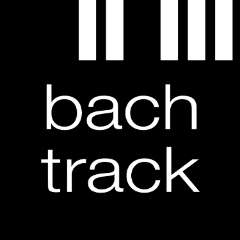There’s a lot of interest in the baroque this year, what with Handel’s anniversary and the big Baroque 09 exhibition at the V&A. Being generally ignorant about the period, it was enlightening to watch the BBC’s series about the baroque, presented by the art critic Waldemar Januczak, who gave a graphic depiction of the movement as being the cultural arm of the counter-reformation. The baroque, he explained, was the Catholic church striking back by getting artists such as Caravaggio to communicate the mysteries of the Christian faith in a way that spoke vividly and directly to the hearts and minds of ordinary people.
Januczak didn’t have much to say about music, but at a concert last night at the Cité de la Musique in Paris, I heard the precise musical equivalent of a Caravaggio-like painting of a Pièta (the grief of the Virgin Mary at the death of Christ). Claudio Monteverdi took a passage from his (very pagan) opera "Ariadne's Lament" and turned it into "Il Pianto della Madonna" using the exact same music set to Latin text. Monteverdi’s setting was sung last night by Bernarda Fink, resplendent in a suitably baroque red dress and accompanied only by a lute. It was a tour de force and compelling listening: Fink sung in a very operatic style, turning a sacred text into an extremely human drama, as real as if you were witnessing the events. Gestures, modulation of voice, dynamics were extremely expressive of an extreme tragedy, and Fink sang with glorious purity of tone without losing clarity of diction.
Wrapped around the Monteverdi setting was a programme of vocal and instrumental works on the same theme by Vivaldi and lesser known composers, performed by Il Giardino Armonico directed by Giovanni Antonini. The quality of their playing matched Fink’s singing: this was truly world class stuff. I can confess that the baroque has always been my least favourite musical period (I have some sympathy with the friend who whispered to me after a Vivaldi Concerto “you know, he wrote hundreds of these, and they all sound exactly the same”). However, with playing of this quality and with the music put into context by intelligent programming, I was completely seduced. I remember the having the same reaction to Handel’s Theodora at Glyndebourne a few years ago: when baroque vocal music is at its best, it’s dramatic and spellbinding, the more so for me because I never quite expect it to be so.
The Cité de la Musique is a relatively new venue, having opened in 1995. Unlike the more famous Salle Pleyel (which is run by the same management), it’s located at the Porte de Pantin at the north-east edge of Paris, which makes it the equivalent of building the Barbican Centre in Walthamstow. (If you’ve never heard of Walthamstow, you’re getting the general idea). However, the Métro works fine, and it’s a fine concert hall when you get there: modern, well appointed, well organised and with excellent acoustics. My neighbours at the concert asserted that the quality of the performances was by no means untypical for the venue, and that in addition to the main hall, there’s a smaller chamber hall which they liked even more. Pricing is more than reasonable for a big-name concert:: my ticket at the front of the stalls cost just over €20.
If you’re visiting Paris, the Porte de Pantin may not have been the area of the city that was high on your list of destinations – but with this sort of quality on offer, it’s well worth the trip.
David Karlin 5th June 2009


